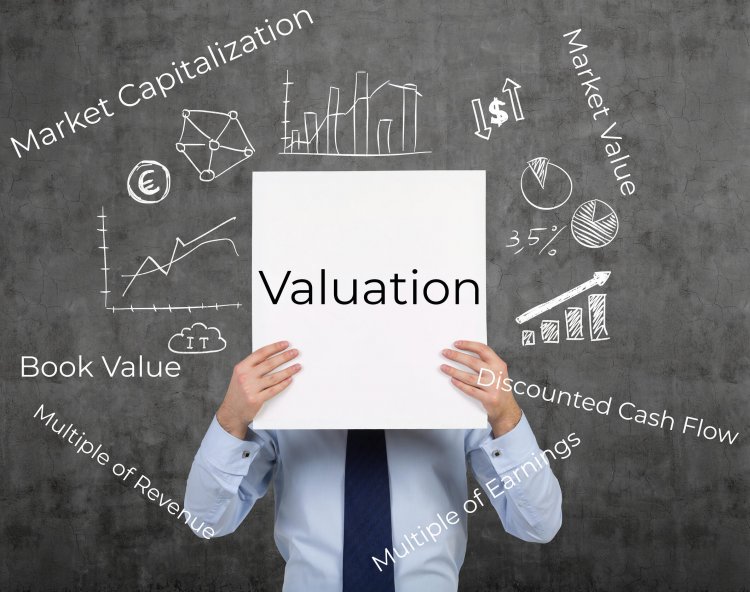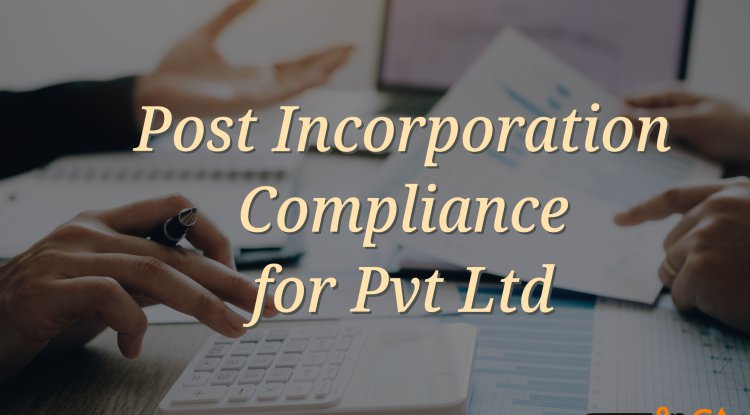Valuation Methodologies — An Overview
There are many methodologies that a valuer may use/consider to value the shares of a Company / Business. Though different values are arrived under various methods, it is necessary for a valuer to arrive at a fair value. In practice, the valuer normally, uses several methodologies of valuation, and arrives at a fair price for the entire business.

When a Business or Shares are transferred from one party to another, it becomes very important for both buyer as well as the seller to know what is the worth of that particular asset which is being transferred. The process which is undertaken to know the worth is nothing but "Valuation". It is popularly said that "Price" is what you pay and "Value" is what you get. "Value" refers to the worth of an asset, whereas "Price" is the result of a negotiation process between a willing but not an overeager buyer and a willing but not an overeager seller. In simple terms, valuation is a process of determining the value of a company or an asset. Valuation is an art and not an exact science. What the buyer thinks is whether the product is "worth the price" he has paid, this "worth" itself is the value of the product. Depending on the structure of the transaction, the management may want to value the entire business or a component of a business - such as division, a brand, distribution network, etc. The importance of intangible assets such as brands, patents, intellectual property rights, human resources, etc. is increasing and the valuation of such assets is also becoming a more common phenomenon. Some of the instances for which valuation is called for are listed below:
- Purchase/Sale of Business / Shares
- Corporate Restructuring such as Merger / Demerger
- Purchase/Sale of Equity stake by joint venture partners
- Family Settlement
- To comply with the requirements of Accounting Standards issued by the ICAI - Impairment testing
- Purchase price allocation
- Determining the Portfolio Value of investments
- To comply with certain statutory requirements e.g. Transfer Pricing, Reserve Bank of India
- Other instances as required under the Companies Act, 2013
It is important to understand the purpose for which the valuation is being attempted before commencement of any valuation exercise. The structure of the transaction also plays a very important role in determining the value. The 'general purpose' value may have to be suitably modified for the special purpose for which the valuation is done. The factors affecting that value with reference to the special purpose must be judged and brought into final assessment in a sound and reasonable manner.
VALUATION METHODOLOGIES
There are many methodologies that a valuer may use/consider to value the shares of a Company / Business. Though different values are arrived under various methods, it is necessary for a valuer to arrive at a fair value. In practice, the valuer normally, uses several methodologies of valuation, and arrives at a fair price for the entire business. As mentioned earlier, selection of appropriate valuation methods also depends on the purpose of valuation. If the valuation is for the purpose of liquidation, the valuer would want to use the Realisable Value of the Net Assets of the Company and not the Earnings Capacity since; in this case the Company will not exist and the share holders will be left with the Net Assets. Similarly, during a Merger, the valuer would want to value the companies involved in a similar manner to arrive at a relative value. Following are generally accepted methodologies for valuation of shares / business:
- Net Asset Method
- Discounted Cash Flow Method
- Earnings Capitalisation Method
- EV/EBIDTA Multiple Method
- Comparable Transaction Method
- Market Price Method
Each method proceeds on different fundamental assumptions, which have greater or lesser relevance, and at times even no relevance to a given situation. Thus, the methods to be adopted for a particular valuation must be judiciously chosen.
NET ASSET VALUE ("NAV") METHOD
The Net Assets Method represents the value of the business with reference to the asset base of the entity and the attached liabilities on the valuation date. The Net Assets Value can be calculated using one of the following approaches, viz.:
- At Book Value
While valuing the Shares/Business of a Company, the valuer takes into consideration the last audited financial statements and works out the net asset value. This method would only give the historical cost of the assets and may not be indicative of the true worth of the assets in terms of income generating potential. Also, in case of businesses which are not capital intensive viz. service sector companies or trading companies this method may not be relevant.
The shortcomings of this method may be partly overcome by applying the Price to Book multiple of a listed company to derive market price of a business with given underlying value of assets.
- At Intrinsic Value
At times, when a transaction is in the nature of transfer of asset from one entity to another, or when the intrinsic value of the assets is easily available, the valuer would like to consider the intrinsic value of the underlying assets. The intrinsic value of assets is worked out by considering current market/replacement value of the assets.
Some of the common adjustments that the valuer takes into account while valuing the Shares/Business of a Company are contingent liabilities, appreciation/depreciation in the value of investments, surplus assets, etc. In case of revaluation of surplus assets, the effect of tax outgo in the event of transfer of the assets should also be considered.
EARNINGS CAPITALISATION METHOD
This method is used while valuing a going concern business with a good profitability history. It involves determining the future maintainable earning level of the entity from its normal operations. It is essential for the valuer to understand the business of the entity and take into account the normal business profits after adjusting the non-recurring/extraordinary items of income and expense. E.g. a one-time Voluntary Retirement Scheme (VRS) expense borne by the entity or an award won in monetary terms. It is important to remove all non-recurring expenses and incomes as the valuer is calculating the future maintainable profits of the entity with normal operations. The valuer must give optimal weights to each financial year considering the profit trend and cyclical nature of business. This maintainable profit, considered on a post tax basis, is then capitalised at a rate, which in the opinion of the valuer, combines an adequate expectation of reward from enterprise and risk, to arrive at the business value. While arriving at such factor, valuer may also consider the market data available for comparable companies, which reflects the fair expectation of the price by the market for the given earnings of those companies. The selection of the Capitalisation Rate, inverse of the Price Earning ('PE') Multiple, is a judgment of the valuer taking into account strengths and weaknesses of the company as well as market situations prevailing at the time of valuation. It would be essential for the valuer to know the PE Multiple of other companies in the same business and market advantages of the company subject to valuation to give it a fair multiple. Value of assets viz. Investments, Surplus Assets, etc. which do not contribute to the operating profits of the business, after considering the impact of notional tax, if any needs to be added to the earnings capitalisation value.
EV/EBIDTA MULTIPLE METHOD
This method is also called the "price-to-EBIDTA multiple" or "Comparable Companies Multiple Method". The EBITDA multiple is the ratio of the value of capital employed (enterprise value) to EBITDA. This method is similar to Earnings Capitalisation Method, only difference being EBITDA of the company needs to be capitalised to arrive at the Enterprise Value. While considering the EV/EBITDA Multiple of comparable companies, the valuer needs to keep in mind that EBITDA multiple does not capture the differences in depreciation methods and also the debt funding that one company may have taken vis-a-vis another. EV/EBIDTA multiple is calculated as:
| Enterprise Value | ||
| EV/ EBITDA Multiple | = | ----------------------- |
|
EBITDA |
Enterprise Value = Market Value of Equity + Market Value of Debt
COMPARABLE TRANSACTION METHOD
The Comparable Transaction Method is a relative valuation method, wherein the details of recent transactions of similar business/ companies are considered to estimate the business/ company value. This method is seldom used in practice since, there may not be enough transactions of similar business/ company or the details of relevant transactions may not be available in the public domain. It is more used as a cross check. Adequate care is to be exercised by the valuer when carrying out valuation since, the comparable transaction value may include control premium or liquidity discount which needs to be adjusted.
MARKET PRICE METHOD
This method evaluates the value on the basis of prices quoted on the stock exchange. Average of quoted price is considered as indicative of the value perception of the company by investors operating under free market conditions. The average for such Market Prices could be taken on a Weighted Average method taking into consideration the value and the volumes of the transactions taken place on the stock exchange. Since the Secondary Equity Market is not only a reflection of the fair value of the company, but also of other market information it is important for a valuer to know the perception of the market prevailing during the span of time for which he evaluates the price of the share. At times, the valuer may also want to ignore this value, if according to the valuer, the market price is not a fair reflection of the company's underlying asset or profitability status.
DISCOUNTED CASH FLOW (DCF) METHOD
In today's scenario, it is essential for valuers to not only take into consideration the past profits of the company, but also look at its future profitability. With the increase of the knowledge sector, where the asset base of the company is much smaller than its future profitability, this method has become very popular. The DCF method values the business by discounting its free cash flows for the explicit forecast period and the perpetuity value thereafter. The free cash flows represent the cash available for distribution to both the owners and the creditors of the business. The perpetuity value of the entity is calculated to fully capture the growth capacity of the entity to infinity, after the explicit period. It is important for the valuer to take into consideration the past growth rate of the concern as well as the future projections for the explicit period, while determining the perpetuity growth rate. The free cash flows and perpetuity are discounted by a Weighted Average Cost of Capital (WACC). WACC is an appropriate rate of discount to calculate the present value of the cash flows as it considers equity-business risk and the debt-equity ratio of the company. The Cost of Equity is worked out by taking into consideration the risk-free rate of return and adjusting the same for the equity risk premium and the Beta factor. The risk free rate of return is taken based on the current return on Government Treasury Bills. Beta the sensitivity of a particular stock vis-a-vis Market or Index. Equity Risk Premium is the expectation of the investor over and above the risk free return. On the other hand, net of tax long-term cost of debt is taken after considering the existing cost for the debt raised by the entity. The Debt-Equity ratio is applied and a WACC can be calculated in a manner shown by the formula below:
| (Cost of Equity x Equity Weight) + (After Tax Cost of Debt x Debt weight) |
||
| WACC | = | ------------------------------------------- |
| (Debt weight + Equity weight) |
After discounting the future cash flows and the perpetuity value, the present value calculated is a fair indicator of the value of the business.
CONCLUSION
In practice, as mentioned earlier, the valuer may consider one and or some of the above methods or may be some additional methods to arrive at a fair value of the business, giving adequate weightage to the foregoing methods. A judicial recognition to the weighted average of the Net Assets Method, the Earning Capitalisation Method and the Market Price Method is found in the decision of the Supreme Court in Hindustan Lever Employees' Union vs. 1-1LL & Others (1995) 83 Company Cases 30. However it may be relevant for Merger Valuations only. Besides, at times, the valuation arrived at as per above methods may be enhanced by a premium (say for acquiring controlling interest in a company) or may be discounted (say for lack of liquidity in case of unquoted shares).
What's Your Reaction?




















